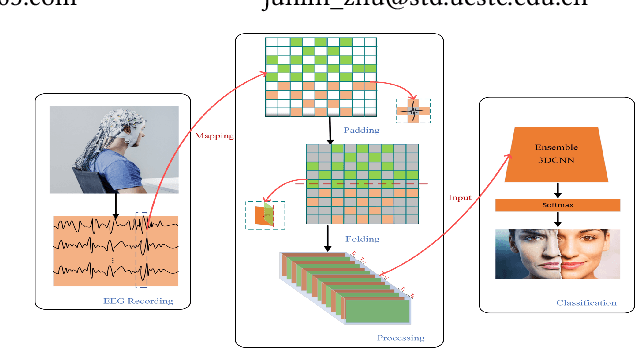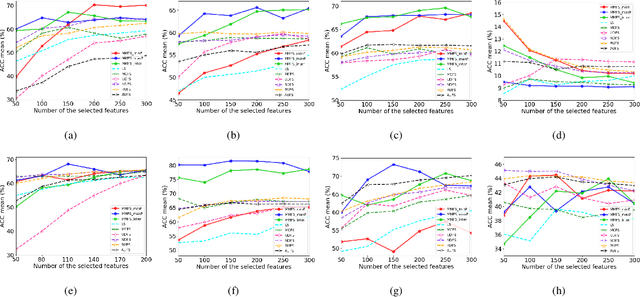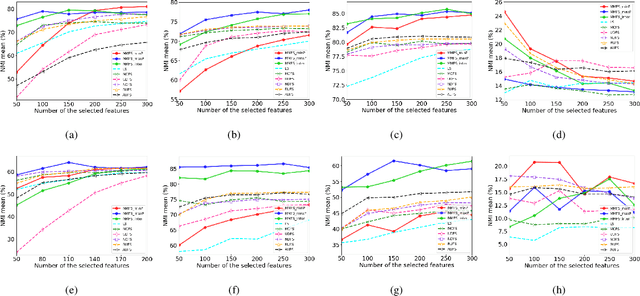Shangming Yang
SFE-Net: EEG-based Emotion Recognition with Symmetrical Spatial Feature Extraction
Apr 25, 2021



Abstract:Emotion recognition based on EEG (electroencephalography) has been widely used in human-computer interaction, distance education and health care. However, the conventional methods ignore the adjacent and symmetrical characteristics of EEG signals, which also contain salient information related to emotion. In this paper, we present a spatial folding ensemble network (SFENet) for EEG feature extraction and emotion recognition. Firstly, for the undetected area between EEG electrodes, we employ an improved Bicubic-EEG interpolation algorithm for EEG channel information completion, which allows us to extract a wider range of adjacent space features. Then, motivated by the spatial symmetry mechanism of human brain, we fold the input EEG channel data with five different symmetrical strategies: the left-right folds, the right-left folds, the top-bottom folds, the bottom-top folds, and the entire double-sided brain folding, which enable the proposed network to extract the information of space features of EEG signals more effectively. Finally, 3DCNN based spatial and temporal extraction and multi voting strategy of ensemble Learning are employed to model a new neural network. With this network, the spatial features of different symmetric folding signlas can be extracted simultaneously, which greatly improves the robustness and accuracy of feature recognition. The experimental results on DEAP and SEED data sets show that the proposed algorithm has comparable performance in term of recognition accuracy.
Unsupervised Feature Selection via Multi-step Markov Transition Probability
May 29, 2020



Abstract:Feature selection is a widely used dimension reduction technique to select feature subsets because of its interpretability. Many methods have been proposed and achieved good results, in which the relationships between adjacent data points are mainly concerned. But the possible associations between data pairs that are may not adjacent are always neglected. Different from previous methods, we propose a novel and very simple approach for unsupervised feature selection, named MMFS (Multi-step Markov transition probability for Feature Selection). The idea is using multi-step Markov transition probability to describe the relation between any data pair. Two ways from the positive and negative viewpoints are employed respectively to keep the data structure after feature selection. From the positive viewpoint, the maximum transition probability that can be reached in a certain number of steps is used to describe the relation between two points. Then, the features which can keep the compact data structure are selected. From the viewpoint of negative, the minimum transition probability that can be reached in a certain number of steps is used to describe the relation between two points. On the contrary, the features that least maintain the loose data structure are selected. And the two ways can also be combined. Thus three algorithms are proposed. Our main contributions are a novel feature section approach which uses multi-step transition probability to characterize the data structure, and three algorithms proposed from the positive and negative aspects for keeping data structure. The performance of our approach is compared with the state-of-the-art methods on eight real-world data sets, and the experimental results show that the proposed MMFS is effective in unsupervised feature selection.
 Add to Chrome
Add to Chrome Add to Firefox
Add to Firefox Add to Edge
Add to Edge